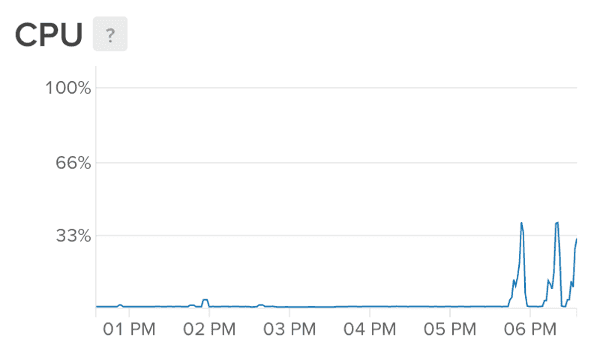

Optimize Dokku Deployment Speed for Rails with Dockerfile
source link: https://pawelurbanek.com/optimize-dokku-deployment-speed
Go to the source link to view the article. You can view the picture content, updated content and better typesetting reading experience. If the link is broken, please click the button below to view the snapshot at that time.

Optimize Dokku Deployment Speed for Ruby on Rails with Dockerfile
Updated Jun 28, 2019 12 comments
6 minute read

I'm available to conduct a performance tuning and security audit of your Rails app.
Dokku lets you setup Rails hosting infrastructure on a simple VPS without much dev ops experience. Although it is easy to get started, a default config might result in very slow and unreliable deployments. In this tutorial, I will describe how I’ve improved my Dokku based Ruby on Rails (NodeJS with Yarn and Webpack) application deployment speed by over 400% using a Docker image Dockerfile.
This tutorial is written in the context of RoR tech stack but solution presented (with small Docker image config tweaks) can be applied to all the server side technologies hosted with Dokku.
Getting started with Docker and Dokku
If you are not familiar with Docker and Dokku, you should check out one on my previous blog posts to get up and running quickly. Once you have a simple Rails app hosted on buildpacks based Dokku setup, you can follow rest of this tutorial to significantly reduce deployments speed.
But first, let me explain why default Dokku deployment tends to be so slow.
“There’s a Heroku buildpack for that…”
Every non-trivial Rails app has multiple system level dependencies. Dokku provides support for them using so-called buildpacks, the same approach that Heroku is using.
My project was using the following .buildpacks file:
https://github.com/gaffneyc/heroku-buildpack-jemalloc.git
https://github.com/heroku/heroku-buildpack-nodejs.git
https://github.com/heroku/heroku-buildpack-ruby.git- Ruby - a default buildpack for Rails apps
- NodeJS - required for Rails apps using Webpacker and Yarn for frontend dependencies
- Jemalloc - a must-have for modern Rails apps, out of the box reduces memory usage by ~20%
I was also using Chrome Puppeteer buildpack for a moment but eventually switched to Browserless.io on a separate CPU optimized VPS.
But why buildpacks are so slow?
Buildpack is a list of commands that are executed during a deploy. I am not too much of a Docker expert to understand exactly what’s going on under the hood, but let’s take a look at a sample console output:
Downloading and installing node 8.11.4...
...
Downloading and installing yarn (1.10.0)...
...
Compiling Ruby/Rails
...Apparently by default buildpacks are not too smart about caching and every single deployment downloads and recompiles some of the application dependencies. No wonder it is slow, and probably not the best way to use your application’s VPS CPU and RAM. What’s worse buildpacks based builds sometimes randomly fail due to 3rd party connectivity issues and network timeouts.

Speed up the deployment with Dockerfile
There is an alternative solution. You can use a custom Docker image instead of multiple buildpacks. The official Dokku documentation mentions it very briefly and describes as a "Power User" feature.
In practice it’s just a matter of adding one config file and running a couple of bash commands. Switching to Dockerfile reduced deployment time of Abot from over 8 minutes to less than 2.
I will explain how to set this up for a sample Ruby on Rails app using Ruby 2.5.1, NodeJS 8.x.x LTS with Yarn 1.9.4.
Use an official Ruby Docker image
You need to start with adding a Dockerfile file to the root of your application folder with the following contents:
FROM ruby:2.5
# Install NodeJS and Yarn
RUN apt-get update
RUN apt-get -y install curl
RUN apt-get install -my gnupg
RUN curl -sL https://deb.nodesource.com/setup_8.x | bash -
RUN curl -sS https://dl.yarnpkg.com/debian/pubkey.gpg | apt-key add -
RUN echo "deb https://dl.yarnpkg.com/debian/ stable main" | tee /etc/apt/sources.list.d/yarn.list
RUN apt-get update && apt-get -qqyy install nodejs yarn && rm -rf /var/lib/apt/lists/*
# Install Ruby Gems and node modules
COPY Gemfile* /tmp/
COPY package.json /tmp/
COPY yarn.lock /tmp/
WORKDIR /tmp
RUN bundle install --jobs 5 --retry 5 --without development test
RUN yarn install
RUN mkdir /app
WORKDIR /app
COPY . /app
ENV RAILS_ENV production
ENV RACK_ENV production
# Execute the Procfile
CMD ["bin/run-dev.sh"]It installs NodeJS and Yarn on top of the official Ruby 2.5 Docker image
Don’t forget to precompile the assets by adding it as a predeploy step in app.json file:
{
"name": "My Rails app",
"scripts": {
"dokku": {
"predeploy": "bundle exec rake assets:precompile",
"postdeploy": "bundle exec rake db:migrate"
}
}
}Now you just need to remove the .buildpacks file if you were using it before and remove one config variable:
dokku config:unset --no-restart DOKKU_PROXY_PORT_MAPWhen you do a git push to dokku remote your Ruby on Rails app will use a Dockerfile instead of buildpacks:
Use a custom Docker image with preinstalled dependencies
Alternatively, you could use my Ruby Jemalloc/NodeJS/Yarn buildpack ([Disclaimer] I am not a dev ops pro. Tips/PRs on how this image could be improved are welcome.). It has an additional advantage of using Ruby binary compiled with Jemalloc for reduced memory usage and NodeJS with Yarn is already in place:
FROM pawurb/ruby-jemalloc-node-yarn:latest
COPY Gemfile* /tmp/
COPY package.json /tmp/
COPY yarn.lock /tmp/
WORKDIR /tmp
RUN bundle install --jobs 5 --retry 5 --without development test
RUN yarn install
RUN mkdir /app
WORKDIR /app
COPY . /app
ENV RAILS_ENV production
ENV RACK_ENV production
CMD ["bin/run-dev.sh"]You could also build and publish Dockerfile image yourself but that’s outside the scope of this tutorial.
Dockerfile caveats
ENV variables defined by dokku config:set command are not available during Dockerfile based deployments build time. bundle exec rake assets:precompile predeploy step will launch your Rails app process, and things could fall apart if some of the required ENV variables are missing.
You should set them using this command:
dokku docker-options:add build '--build-arg AWS_SECRET_KEY=12345'
dokku docker-options:add build '--build-arg AWS_ACCESS_KEY=67890'It’s not a perfect solution because requires you to duplicate config but works for my use case and must be done only for nonoptional variables.
Useful Docker commands
Here’s a list of commands that might come in handy if you get stuck along the way:
docker ps // display docker containers
docker image prune // remove unused docker images
docker stats // display CPU/memory usage of running docker containers
docker kill $(docker ps -q) // stop all docker containers
docker rm $(docker ps -a -q) // remove not running docker containers
docker system prune // general cleanupSummary
Playing directly with Dockerfile images is a bit lower level than using a default Dokku buildpacks based approach. For me, the speed and reliability of Dockerfile powered deployments was more than worth the effort.
Recommend
-
 35
35
-
 19
19
Luminus provides a great way to get up and running with a Clojure web application. However, building your app is only half the work. Once you've got your app working, the next step is to host it somewhere so that the user...
-
 8
8
How to Migrate a Ruby on Rails App from Heroku to Dokku Updated May 18, 2020 14 comments 8 minute read ...
-
 8
8
How to use Docker Compose for Rails development: Do not bundle install in Dockerfile.dev Mar 10, 2019 For past 12 months, we have been containerizing Rails apps for our projects, because we needed certain b...
-
 7
7
Guide to write proper Dockerfile for production Rails app May 1, 2018 tl;dr: Scroll all the way down for Dockerfile. In Prime Technologies, we provide digital solutions for our si...
-
 7
7
Wrangling Complex Rails apps with Docker Part 1 : The Dockerfile
-
 4
4
Introduction Sometimes you end up deploying an application to Dokku and then realize that you want to revert the changes you made. In this tutorial we'll go over how to roll back a Dokku deployment. ...
-
 4
4
-
 5
5
Friday, February 9, 2024 Rails Foundation Docs, Query Logs source_location, Dockerfile gets jemalloc Posted by zzak Hi, it’s
-
 9
9
Build the application image with the pack CLI Now build an image named my-image-name by executing the heroku builder against the application by running the pack build
About Joyk
Aggregate valuable and interesting links.
Joyk means Joy of geeK